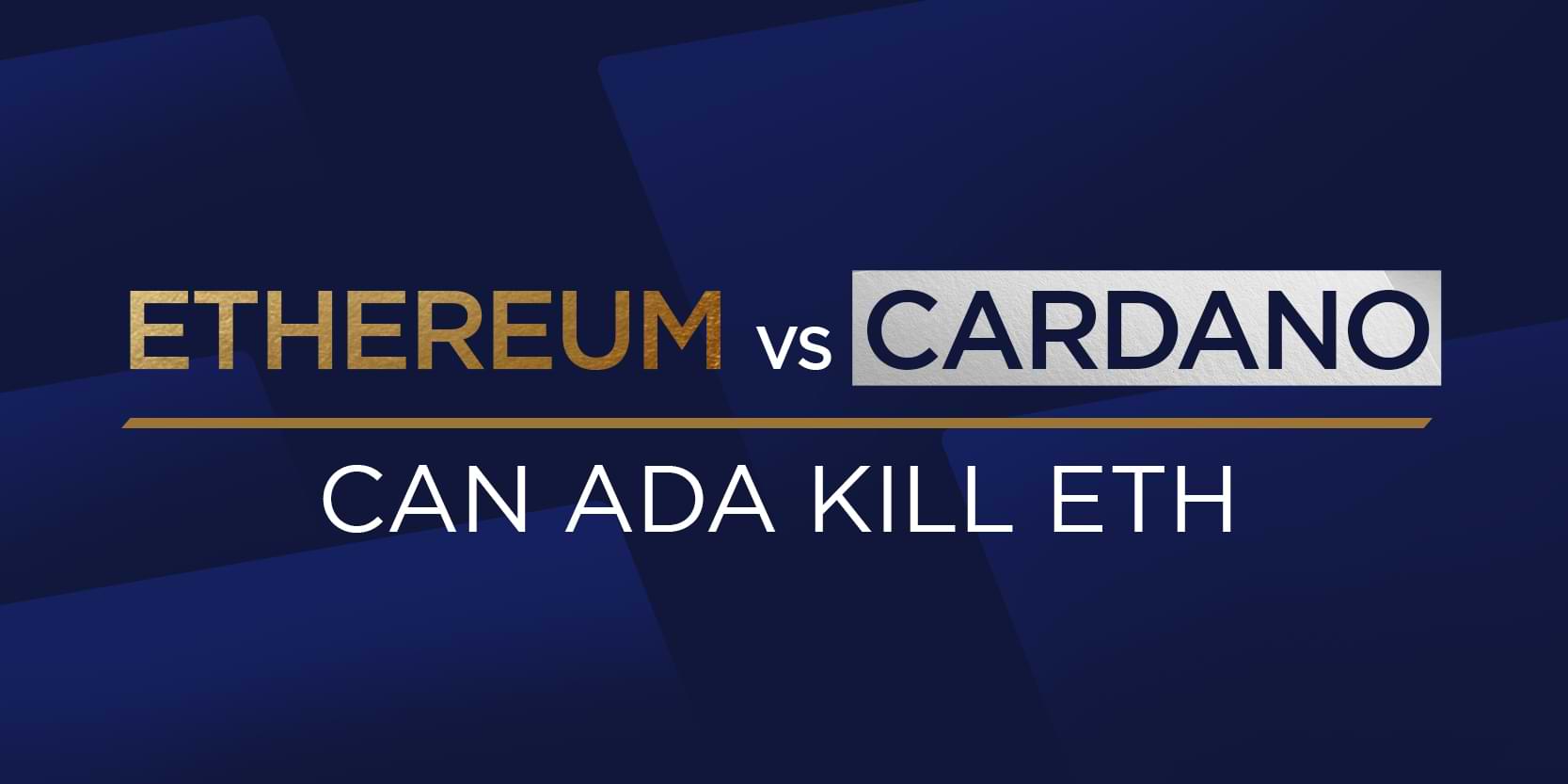
Ethereum vs Cardano: Can ADA Kill ETH
Ethereum was a blockchain ahead of its time. Despite being released in 2015, its platform was packed with enough functionalities to remain important until today. Its revolutionary smart contract integration paved the way for developing decentralised applications and provided a foundation for some of the biggest altcoins on the market, from Tether (USDT) to Chainlink (LINK). However, Ethereum isn’t without fault––with its biggest issue being scalability.
Cardano (ADA) was launched in 2017 and offered the same things that Ethereum does––except that it had the advantage of being a latecomer to the market. The blockchain addresses almost all of Ethereum’s faults with the potential to scale to greater heights. And now investors are left to wonder whether Cardano can possibly nullify Ethereum’s significance in the industry.
Cardano Vs Ethereum: The Key Differences
While Ethereum and Cardano are fundamentally the same in that they both offer smart contract technology and a platform for building the decentralised finance sphere, there are key differences that set these two blockchains apart.
Transaction Speed
If there’s anything Ethereum is known for, it’s a staggeringly low transaction per second (tps) capacity, second only to Bitcoin. Ethereum is only capable of processing around 10-15 tps, often causing huge backlogs and congestion on the network. It’s one of the reasons why ETH gas fees (another term for its processing fees) are incredibly high. For instance, if you were to sell an Ethereum-based NFT on a marketplace, you could be paying $60 to list a $20 artwork. On paper, sending ETH will only cost about $0.85––but in reality, it can be significantly more than that.
In contrast, Cardano’s blockchain was built with a massive tps capacity of 1,000 per hydra head––and there’s 1,000 on its network. That means the network can process up to one million transactions per second, scaling higher than third-party bigwigs like Visa. Cardano’s revolutionary technology, Ouroboros Hydra, puts it at the forefront of cryptocurrency scalability.
Supply
Cardano has a maximum supply of 45 billion ADA, and there are currently 31 billion in circulation. This number is much bigger than most cryptocurrencies, many of which cap at under 100 million. ADA is mined through the Proof-of-Stake algorithm, which can be done from an ordinary computer. Investors are encouraged to join staking pools where they can contribute some ADA and gain back a number of coins based on their initial stake. It’s a simple process that doesn’t require special mining hardware.
Meanwhile, Ethereum doesn’t have a maximum supply, but only 18 million ETH can be minted per year, so there’s only about 115 million ETH currently in circulation. ETH is mined through the Proof-of-Work algorithm, an extremely power-hungry process where miners must use specialised ASIC rigs to race to solve a complex math puzzle. The first will win the coin reward. However, the Ethereum 2.0 migration will turn the network into a Proof-of-Stake––though that’s expected to come years down the road.
Demand
While Cardano has massive potential to scale up for mass adoption, its platform is the less popular of the two. Most developers are already used to the Ethereum coding language, which is why many stick to the latter for developing apps and tokens. Ethereum also was the first to popularise many innovations in blockchain technology. For instance, the recent interest in NFTs came to be thanks to the ERC-721, Ethereum’s token standard for non-fungible tokens.
At the forefront of blockchain innovations, Ethereum has taken hold of most of the market focused in this niche. It has always taken the 2nd spot by market cap, second only to Bitcoin, while Cardano sits at #6.
Price History
Ethereum crypto stayed on the under-$20 mark until the 2017 cryptocurrency bull run, which saw ETH prices break past the $1,000 mark. The coin grew by over 5,000% between 2016 to 2017––the biggest it has ever grown in history. However, after the bubble burst in early 2018, ETH was down to the $200 line, staying within that unimpressive zone until the 2020 bull market, where prices started to pick up again. In the past year, Ethereum has grown by over 1,000%, with an all-time high of $2,645 and a current market value of $2,349.
As for Cardano currency, its huge supply meant that prices would tread lower upon release, sitting at under $0.01 for most of its lifetime. ADA found its first big break in mid-2020 when it finally broke past the $0.1 mark. In Q1 of 2021, ADA finally the $1 milestone, consistently treading within this price point. It boasts an all-time high of $1.56. While unimpressive compared to Ethereum, it’s important to know that there’s also a significantly greater supply of ADA, hence the different price scaling.
Final Thoughts
When you are intended to make an investment on the crypto market, you should investigate whether to trade eth vs btc, eth vs eos or eth vs ltc. Both Ethereum and Cardano are wonderful blockchains that directly impact the development of the digital economy through innovative open-source platforms. While Ethereum is currently the platform of choice among developers, it’s hard to look past Cardano’s massive potential. It’s the only blockchain that can already scale up to global adoption––and that means faster transaction speeds and negligible fees in-between.
At the end of the day, it’s a good idea to diversify your portfolio with both. But if you only have a choice of one, then ADA might be a safer option. Alternatively, you can watch Ethereum’s transition to 2.0 closely and decide after new announcements surface. Either way, both ADA and ETH are promising options to new and seasoned investors.





Leave a Reply
95 comments
Add comment ×